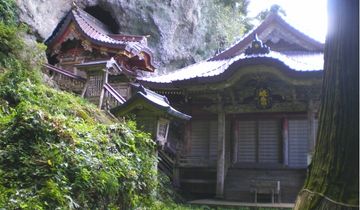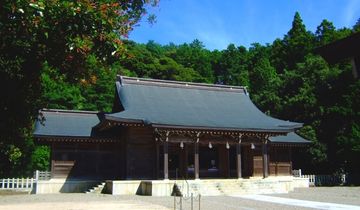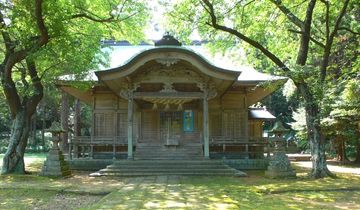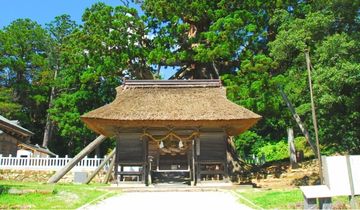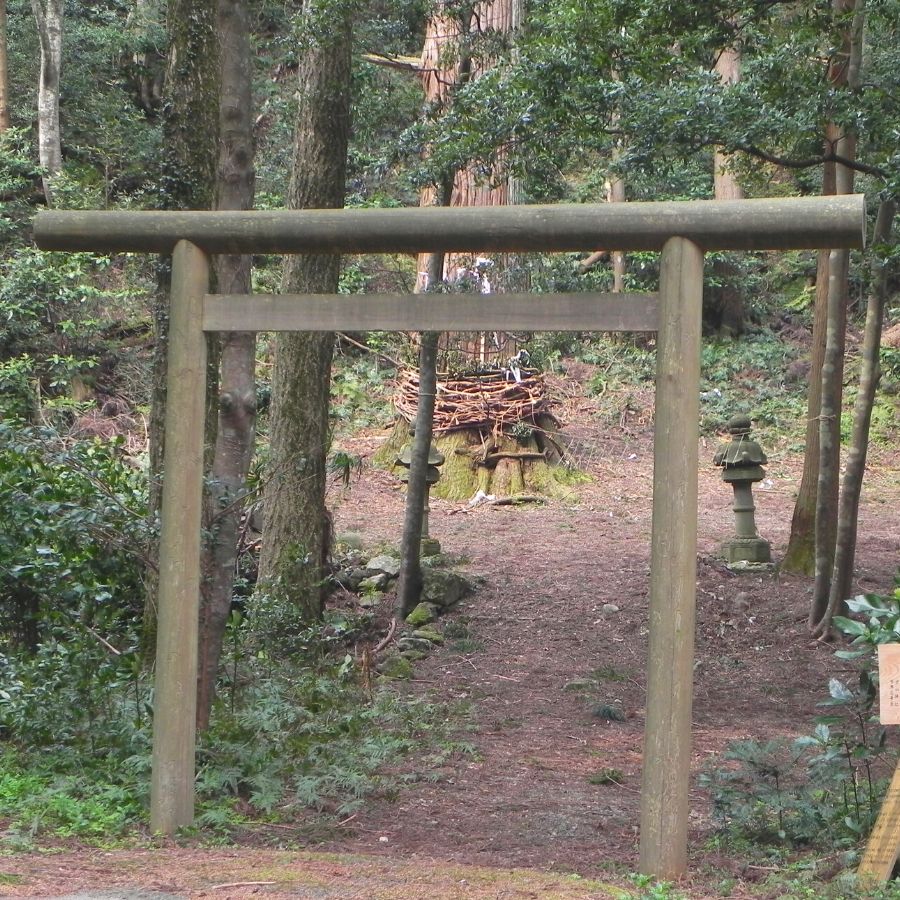
Lifestyles and Traditions - Shrines
Ōyama Shrine is known as the venue of the Fuse Mountain Festival. According to records, the deity Ōyamatsumi has been enshrined here since mid-Edo period (1603–1867), and the festival was already held in the early Edo period. However, it is believed that the festival has a much longer history. This shrine does not have any shrine buildings, but there is an object of worship: a Japanese cedar tree (Cryptomeria japonica) which is about 600 years old.
Fuse Mountain Festival is held over two days on the first Saturday and Sunday of April. However, if April 1 falls on a Sunday, the festival will be held on March 31. In the past, it was held on the first Day of the Ox in the second month of the lunar calendar.
The first day of the festival is called obitachi. 15–30 young men from the area will become obitachi, and go into the woods to collect vines of the hardy kiwi (Actinidia arguta) that are used to wrap around the sacred tree. In addition, a sakaki tree (Cleyera japonica), which is used as a yorishiro (an object or physical space where deities temporarily occupy) is cut down. The sakaki tree, serving as the matsuri yado (the festival accommodation for the deity), and two crossbars are then tied together with ropes, to form the shape of a spinning top. At the same time, on the way back to Kasuga Shrine, a purification ceremony called sakaki-makuri is held in various locations in the area. After the sakaki tree arrives at the shrine, it is placed inside the shrine grounds until the next spring, to indicate that it is the dwelling of the deity.
On the second day, the vines are wrapped around the sacred tree, and the ritual is called obi-jime because it looks like an obi belt worn with a kimono. The young men who collected the vines the day before now become the obi-jime-bito and after dancing (swaying the vine "obi belt" vigorously) to the song being sung, the vine is then wrapped around the sacred tree seven and a half times.
In the past, the Fuse area, where rice paddy cultivation was hardly practiced, had to rely on the makihata farming pastures cultivated in the deep forests to grow all the crops, such as barley, buckwheat, and millet. As a worship place for the Dragon King, the spirit of water that is most necessary for farming, and Mt. Mani, the seat of the Guardian of Oki Province, the spirit of the deity of Ōyama is invited to reside in the Japanese cedar tree in Minaminotani, so as to protect the village from fire and pray for prosperity and good harvests. Before the Meiji era (1868–1912), the ceremony was performed by Yamabushi (mountain ascetic monks) of the highest rank who moved to the village.


